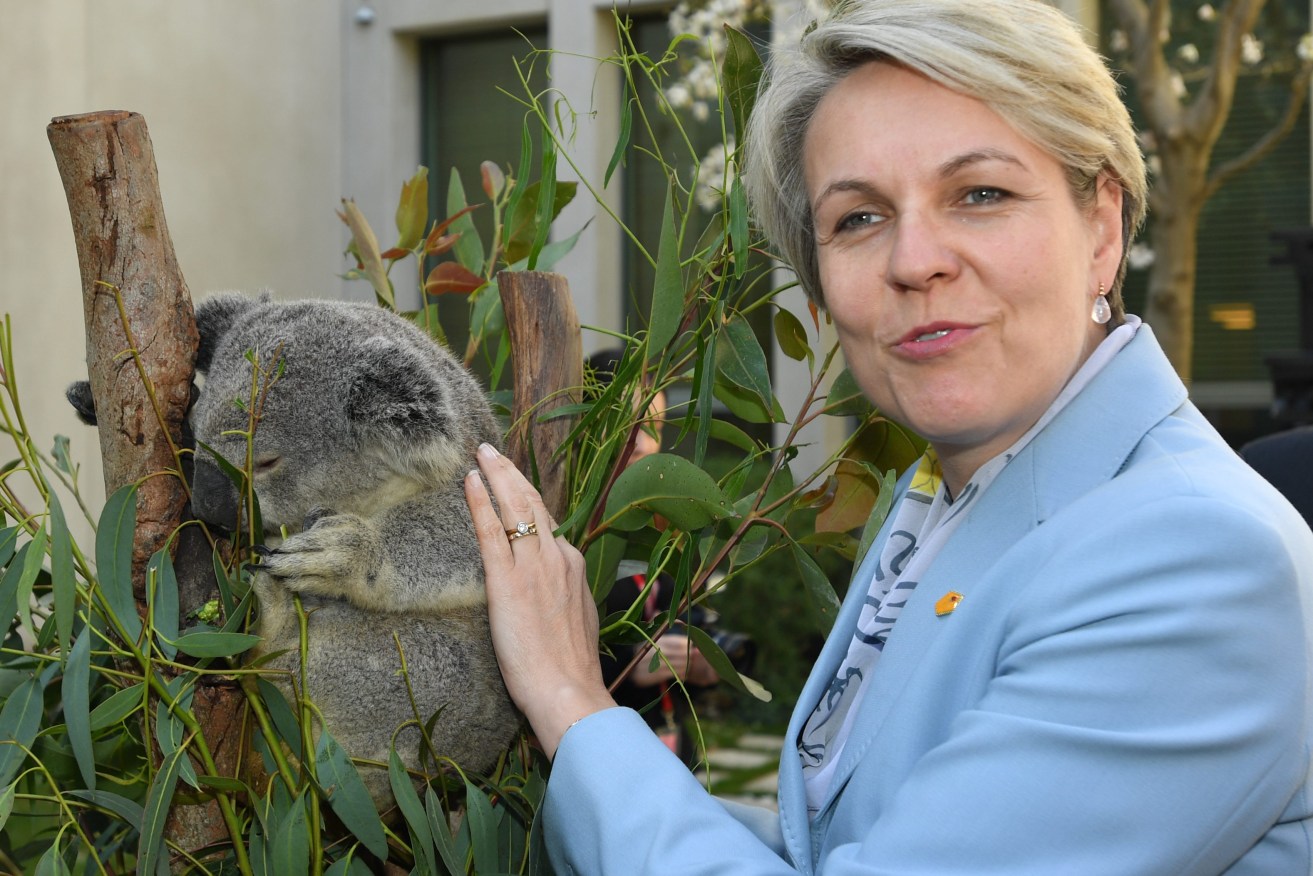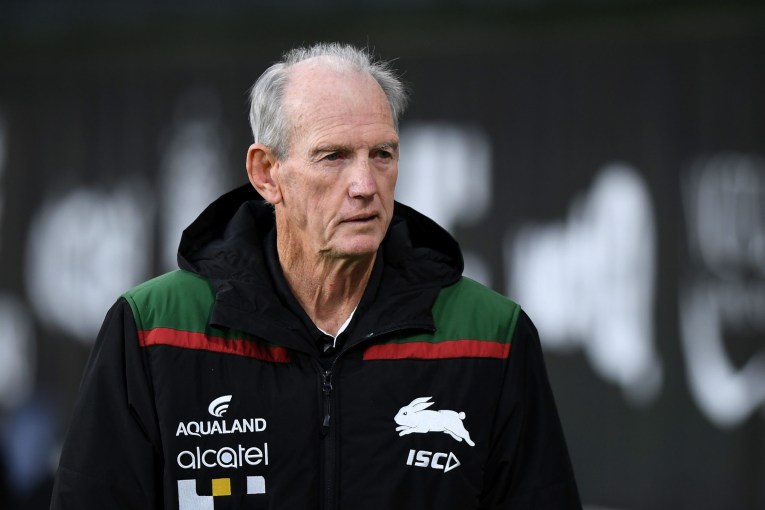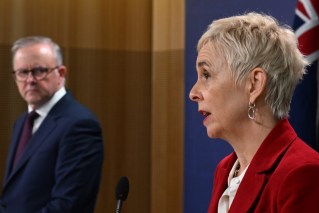Picking favourites: Government singles out 110 species that we can’t do without
The government’s plan to halt the extinction crisis will begin with the targeting of 110 priority species, including many of Australia’s best-known native animals.

Environment Minister Tanya Plibersek. (AAP Image/Mick Tsikas)
Independent scientists have compiled a collection of threatened animals and plants, as well as 20 “priority places” such as Kangaroo Island and Kakadu.
It is hoped that by boosting the prospects of these locations, both threatened species and other native plants and animals will also get a let-up.
Environment Minister Tanya Plibersek released the plan at the same time she added 15 new species and three ecological communities to the list.
She said the threatened species action plan included ambitious targets such as the prevention of any further extinction of plants or animals and the protection and conservation of at least 30 per cent of Australia’s land mass.
Independent scientists were responsible for choosing the 110 priority species, including koalas, wombats, multiple species of possum, the red-tailed black cockatoo, the Australian sea lion and the brush-tailed rock-wallaby.
Fish, frogs, reptiles and 30 plants are also on the list, and the list of 20 priority places includes the Blue Mountains, the Australian Alps, Kakadu and West Arnhem, Tasmania’s giant kelp forests and Kangaroo and Norfolk islands.
Plibersek said the action plan would guide species protection efforts over the next decade.
“Our current approach has not been working. If we keep doing what we’ve been doing, we’ll keep getting the same results. Australia is the mammal extinction capital of the world,” she said.
“The need for action has never been greater. By prioritising 110 species and 20 places, the plan will drive action where it is needed most and will deliver flow-on benefits to other threatened plants and animals in the same habitats.”
New species added to the threatened list include the parma wallaby, a small rock-dwelling species found along the Great Dividing Range and the western beautiful firetail, which took a huge hit in the Kangaroo Island bushfires.
The three new threatened ecological communities include the Mount Kaputar land snail and slug community, which is now listed as endangered.
Only known to be found at Mt Kaputar in northern NSW, the community features the iconic Kaputar giant pink slug.
It is threatened by feral pigs, climate change and was extensively affected by the 2019 bushfires.
The minister will formally launch the action plan at Sydney’s Taronga Zoo on Tuesday.
SOME OF THE 110 SPECIES PRIORITISED FOR RECOVERY:
MAMMALS:
* Gilbert’s Poteroo, considered extinct until its rediscovery in a WA nature reserve
* The Leadbeater’s Possum, the Mountain Pygmy-possum, the Northern Brushtail Possum and the Western Ringtail Possum
* The Northern Hairy-nosed Wombat
* The Australian sea-lion
BIRDS:
* The majestic grey-black Carnaby’s Cockatoo
* Australia’s largest shorebird, the Eastern Curlew
* The stocky, ground-dwelling Malleefowl
* The vibrant, aerial acrobat, the Swift Parrot
FISH:
* The prehistoric looking Freshwater Sawfish, with its long, saw-like snout
* The Eastern Grey Nurse Shark
* Tasmania’s Red Handfish, which literally looks like it has two red hands
* White’s Seahorse, also known as the Sydney seahorse
FROGS:
* The Mountain Frog, plump and pretty with its vibrant autumn colours
* The Southern Corroboree Frog, found only in the Mount Kosciuszko National Park
* The White-bellied Frog, with its beefy muscular legs
* The Growling Grass Frog, a warty, vibrant green swamp frog that literally growls
REPTILES:
* The Bellinger River Snapping Turtle, found only along a certain stretch of the NSW river
* The Green Turtle, named more for the colour of its fat than its shell
* The Pygmy Blue-tongue Lizard, the smallest member of the blue tongue family considered extinct until it’s rediscovery in South Australia in 1992
* The chubby Arnhem Land Gorges Skink that looks permanently pregnant
INVERTEBRATES
* The Giant Gippsland Earthworm, the biggest worm in the world
* The Lord Howe Island Phasmid, giant flightless stick insect that grows to over 12cm
* The pretty, fruit-sucking Pink Underwing Moth
* The Tasmanian Giant Freshwater Crayfish, the world’s largest freshwater crayfish
PLANTS:
* The Wollemi Pine, one of the world’s rarest plants dating back to the time of the dinosaurs
* Western Australia’s slow growing, odd-named shrub, the Small Flowered Snottygobble
* The Waddy, Waddi, Waddy-wood, better known as the Birdsville wattle
* The Bulberin nut, a threatened species of macadamia
PRIORITY PLACES:
* Eastern forests of far north Queensland
* Brigalow Country, Queensland
* Greater Blue Mountains, NSW
* Australian Alps, NSW, ACT and Victoria
* South East Coastal Ranges – NSW and Victoria
* Southern Plains, including the Western Victorian volcanic plain and karst springs, Victoria and South Australia
* Midlands region of central Tasmania
* Giant kelp ecological community, Tasmania
* Mallee Birds Ecological Community, Victoria, South Australia and NSW
* MacDonnell Ranges, Northern Territory
* Kakadu & West Arnhem, Northern Territory
* Yampi Sounds and surrounds, Western Australia
* Remnant WA Wheatbelt Woodlands, Western Australia
* Fitz-Stirlings, Western Australia
* Kangaroo Island, South Australia.
* Bruny Island, Tasmania
* French Island, Victoria
* Raine Island, Queensland
* The external territory of Christmas Island
* The external territory of Norfolk Island












